Easy Sauce Robert Recipe: A Must-Try French Mustard Sauce
Sauce Robert is a classic French brown mustard sauce that dates back to the 17th century, known for its bold and tangy flavor. Traditionally paired with pork dishes, this sauce perfectly balances savory and acidic notes.
It is an ideal complement to rich, hearty meats like pork chops, roast pork, or even grilled sausages. With its base of a simple demi-glace or brown sauce, Sauce Robert is elevated by the addition of mustard, onions, and white wine, creating a profoundly flavorful accompaniment that transforms any meal.
In this post, I’ll guide you through the steps of preparing an authentic Sauce Robert from scratch. Whether you’re a seasoned chef or a home cook looking to impress guests with a touch of French cuisine, this sauce is both easy to make and versatile enough to enhance various dishes.
I’ll also provide tips on how to customize the sauce to suit your taste, whether you prefer a more decisive mustard kick or a milder, smoother finish. With a few pantry staples and simple techniques, you can bring a taste of French culinary tradition to your table with this delicious and timeless sauce.
History of Sauce Robert
Sauce Robert has a long and rich history rooted in the traditions of classic French cuisine. It dates back to the 17th century and is one of the earliest recorded brown sauces in French culinary literature. Named after the French chef Robert Vinot, the sauce became a staple in the kitchens of royal courts and aristocratic households due to its simple yet flavorful ingredients.
The sauce was traditionally made with a basic demi glace or brown sauce , to which mustard and onions were added, creating a balanced, tangy, and savory flavor. Over time, white wine was incorporated, further enhancing the depth of the sauce and giving it the characteristic acidity that pairs so well with rich meats like pork, beef, and game.
Legendary French chef Marie-Antoine Carême classified Sauce Robert as one of the “small sauces” derived from the foundational sauce espagnole (a precursor to modern brown sauce). Its ability to elevate roasted and grilled meats made it a favorite in French culinary tradition, and it has maintained its place as a classic over the centuries.
While its roots are in historical French cuisine, Sauce Robert remains a versatile and timeless accompaniment to many modern dishes, blending tradition with bold, vibrant flavors.
Why "Robert"?
Sauce Robert is named after a French chef, likely a cook named Robert Vinot, who is credited with popularizing or possibly creating this sauce in the 17th century. While historical records about Chef Robert are limited, the naming follows a common tradition in French cuisine where sauces and dishes are often named after their creators or influential chefs who refined them.
In the case of Sauce Robert, it’s believed that this chef made it popular by preparing it in a way that appealed to the French aristocracy and the royal court. The sauce’s simplicity yet bold flavor allowed it to stand out in the culinary world, and it became a staple for pairing with rich meats like pork. Over time, the sauce earned its place in classical French cooking and retained the name “Robert” in honor of its creator or the chef who made it widely known.
How to Adjust Flavors
- Adjust the Mustard: For a more pronounced mustard flavor, use a stronger Dijon mustard or even whole-grain mustard for added texture. If you prefer a milder taste, reduce the mustard or use a milder variety like yellow mustard.
- Add Sweetness: Balance the sauce’s tanginess by adding a touch of sweetness. Stir in a small amount of honey, brown sugar, or even a dash of apple cider to mellow out the acidity.
- Play with Acidity: The sauce traditionally uses white wine for its acidic component. For a sharper taste, use a dry white wine like Sauvignon Blanc. If you prefer a softer, fruitier note, try a Riesling or even a splash of apple cider vinegar.
- Incorporate Herbs: Add herbs like thyme, tarragon, or parsley for an aromatic twist. Fresh herbs can bring brightness to the sauce, balancing the rich base.
- Creamy Texture: For a creamier version of Sauce Robert, whisk in a little heavy cream or crème fraîche towards the end of cooking. This will give the sauce a smoother finish and a slightly richer taste.
- Spice it Up: If you like a bit of heat, add a pinch of cayenne pepper or a few dashes of hot sauce to give the sauce a subtle kick.
Robert Sauce Recipe
Ingredients
- 1 medium onion finely diced
- 2 tablespoons butter
- ½ cup dry white wine
- 1 cup demi glace
- 1 tablespoon Dijon mustard
- freshly ground pepper to taste
Instructions
- Heat a saucepan over medium heat until hot.
- Add 1 tablespoon of butter to the pan. As soon as the butter melts and starts to foam, add the onions. Be careful not to let the butter burn. Cook the onions until they become translucent.
- Remove the pan from the stove and carefully add the wine to the pan. Return the pan to the stove and reduce until most of the wine is cooked off.
- Add the demi glace along with a little salt and pepper, stir and reduce until the sauce is thick enough to coat the back of a spoon.
- Add the mustard and finish by adding the remaining tablespoon of butter to the sauce and stir. This is called mounting.
- Taste and adjust seasoning with salt and pepper if needed.
- Serve with your favorite pork dishes or beef and chicken recipes.

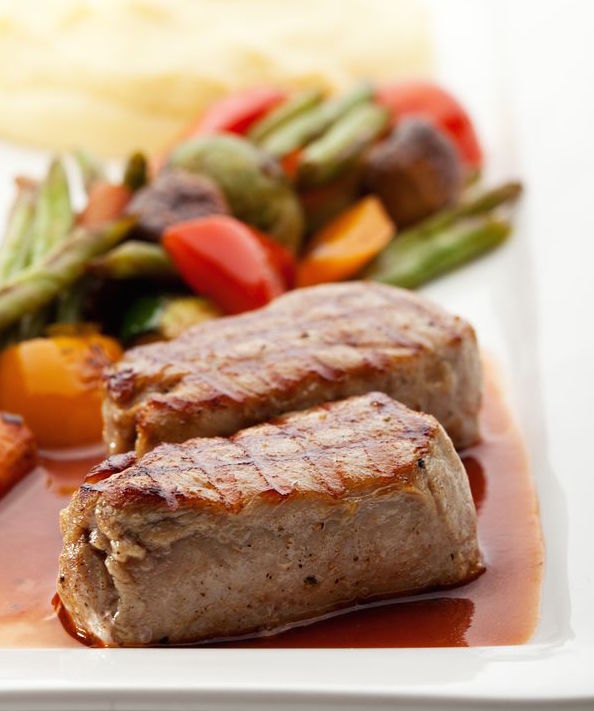




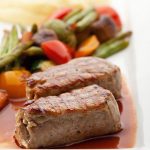
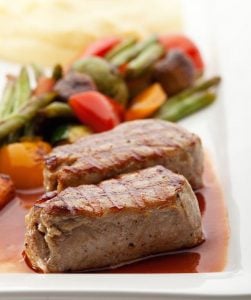
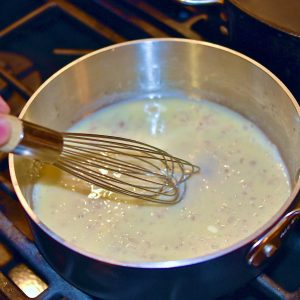
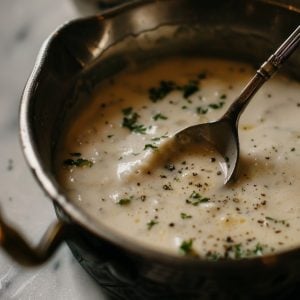
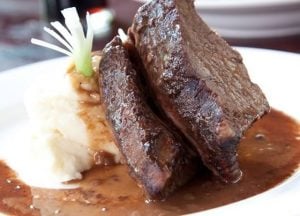
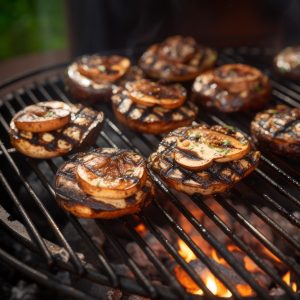
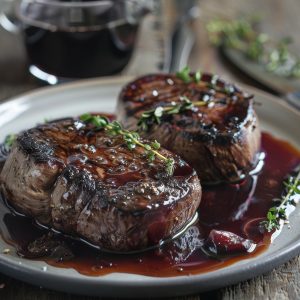
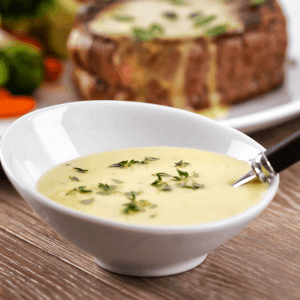



2 Responses
Thanks for the info on Sauce Robert.What commercial product can be used for it and where available? Thanks.
You are welcome Ron. My favorite is Demi-glace Gold® and it is available at Amazon.